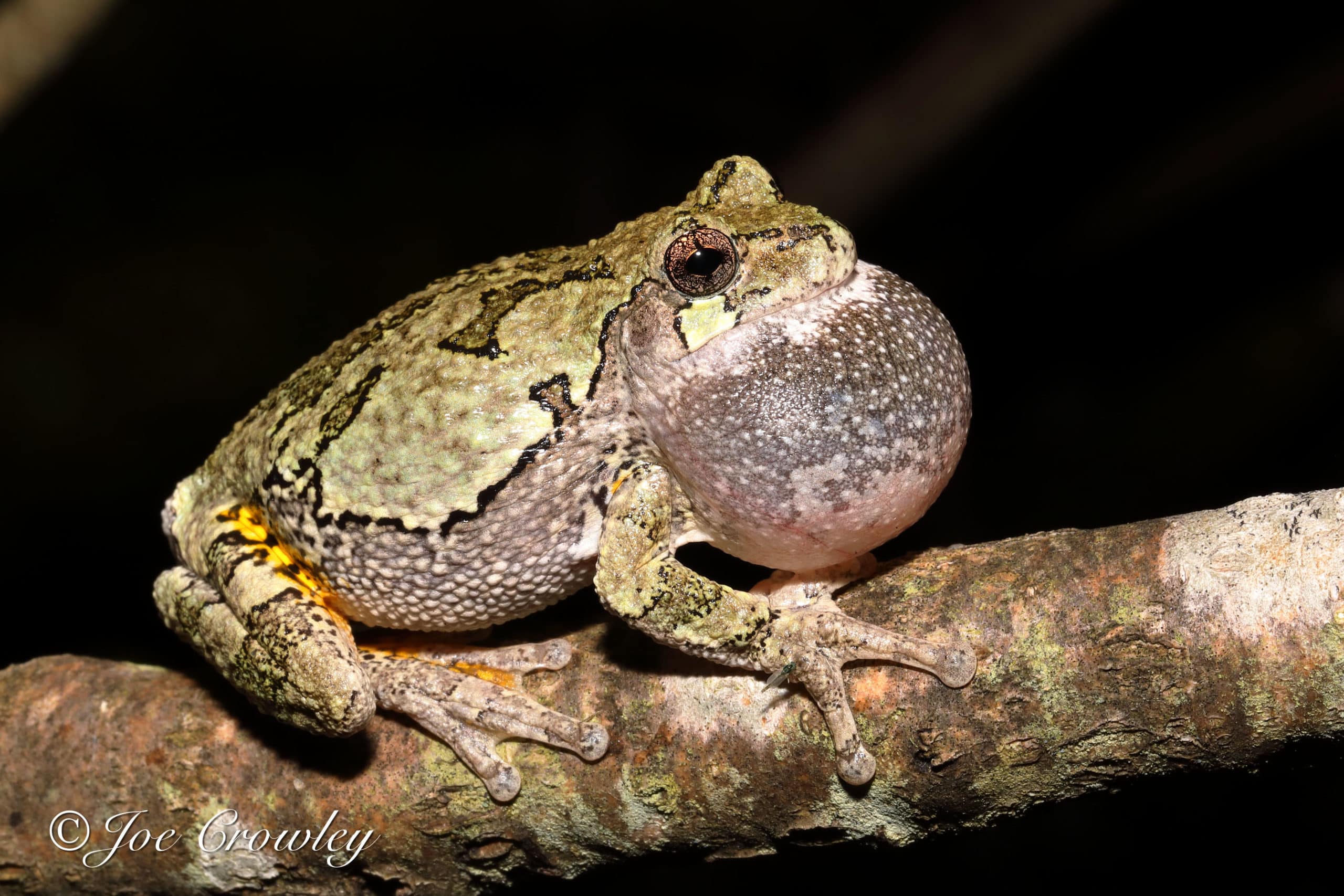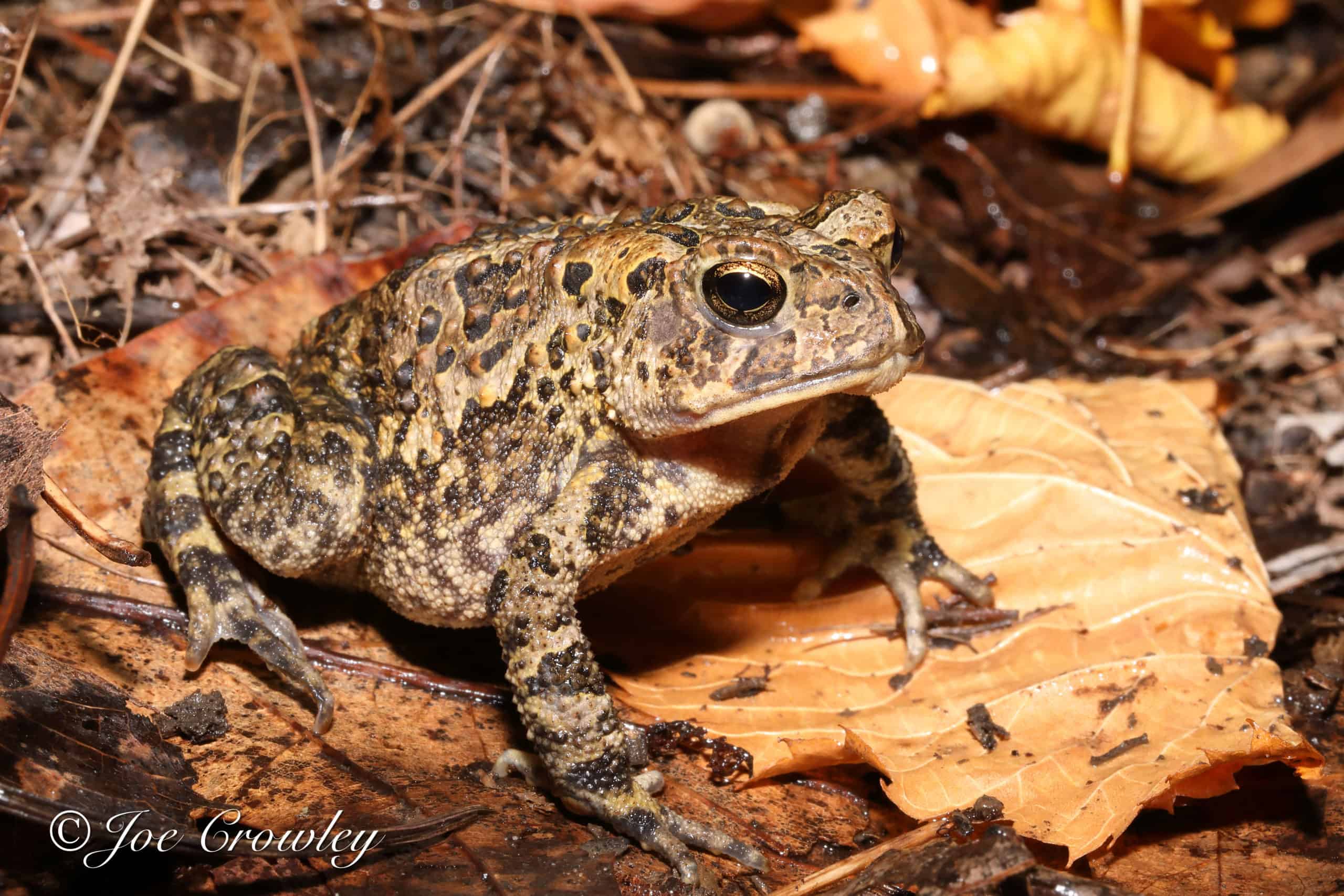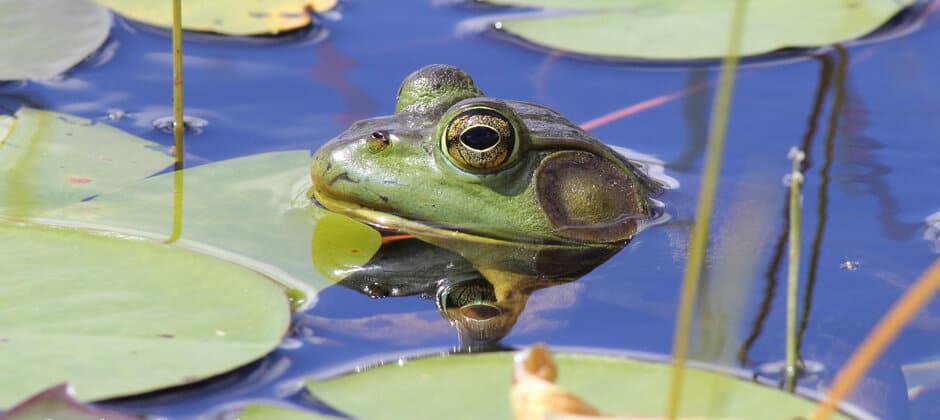Share this article
Chytrid may have limited impact in Ontario
Surveys across Ontario have shown that while frog chytrid is widespread, the fungal disease isn’t necessarily as deadly in the second largest province in Canada as it is in regions farther south.
Frog chytrid, Batrachochytrium dendrobatidis—also known as Bd—has torn through entire populations of amphibians in parts of the U.S. and in countries to its south, causing extirpations in the worst of cases and widespread deaths in others.
Not all amphibians are affected equally by the frog chytrid—some species like American bullfrogs (Lithobates catesbeianus) have shown some resilience to the fungus, for example. Researchers wondered how prevalent the disease was in species throughout Ontario.

Surveys revealed that the chytrid disease Batrachochytrium dendrobatidis was widespread in the province among species like the gray treefrog (Dryophytes versicolor). Credit: Joe Crowley
To conduct the study, published recently in Ecology and Evolution, they enlisted the help of the Ministry of Northern Development, Mines, Natural Resources and Forestry, which was running surveys on other species.
“Ontario is really big, so we piggybacked on work the ministry was already doing,” said Christina Davy, a biology professor at Carleton University in Ottawa who led the study.
Researchers with the Ministry and others were already studying a variety of species throughout Ontario. For the recent study, the researchers gave a number of these field workers sampling kits, asking them to swab any amphibians they found between 2013 and 2016. With help from their collaborators, the researchers managed to collect 1,041 samples throughout the province from 18 of the 25 species believed to live there.
Their analysis revealed that Bd occurred almost everywhere researchers gathered a decent sample size. “We found frog chytrid pretty much across the province of Ontario,” Davy said.
But the good news is that the fungus doesn’t seem to be causing undue harm to Ontario amphibians. Observers only reported one possible instance of a disease-related death—a leopard frog (Lithobates pipiens)—in the areas where they collected samples.

American toads (Anaxyrus americanus) are also found in Ontario. Credit: Joe Crowley
The researchers also examined the samples for another chytrid disease that primarily affects salamanders, Batrachochytrium salamandrivorans. The fungus, called Bsal for short, has not yet been detected in wild populations of salamanders in the Americas—it’s mostly found in the Old World. But researchers are concerned that it may jump the pond via the amphibian trade. The U.S. and Canada both banned salamander imports to prevent the disease from traveling to the Americas through this route, but the disease can also infect frogs and toads. Those taxa have no import bans into the U.S. and Canada from Europe, and could potentially spread Bsal to North America.
Luckily, the researchers didn’t find any trace of Bsal in any of the samples they analyzed across the province. “We were really glad to find that it’s not here yet, or at least in the samples we looked at,” Davy said.
The researchers also wanted to find out what areas or amphibian populations would be most vulnerable if Bsal was introduced. To find out, they ran models that included information about temperature and species diversity to identify potential conservation priority hot spots. They found that in areas like southwestern Ontario around the U.S. border, and the shore of Lake Superior around Thunder Bay, Bsal might pose the biggest threat due to their proximity to possible areas of introduction, or to high amphibian diversity. But most of southern Ontario would provide suitable habitat for Bsal if introduced, Davy said.
Species that might be most at risk include the Allegheny Mountain dusky salamander (Desmognathus ochrophaeus), which mostly lives in the eastern U.S. but has a small population in a restricted area in the Niagara region in Canada. This species is considered endangered by the Committee on the Status of Endangered Wildlife in Canada.
Overall, Davy calls the results of the study “a positive news story,” at least for now. While Bsal isn’t present yet, and Bd doesn’t appear to be as deadly in Ontario as in other parts of the Americas, the warming climate could change the way the fungus interacts with the province’s amphibians overtime, Davy said.
Header Image: Researchers received swabs from 18 species of amphibians in Ontario, including American bullfrogs (Lithobates catesbeianus) Credit: Joe Crowley








